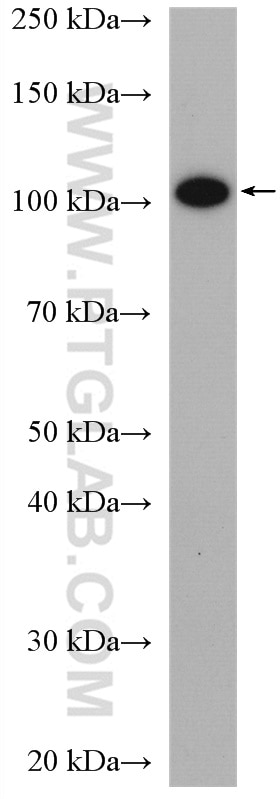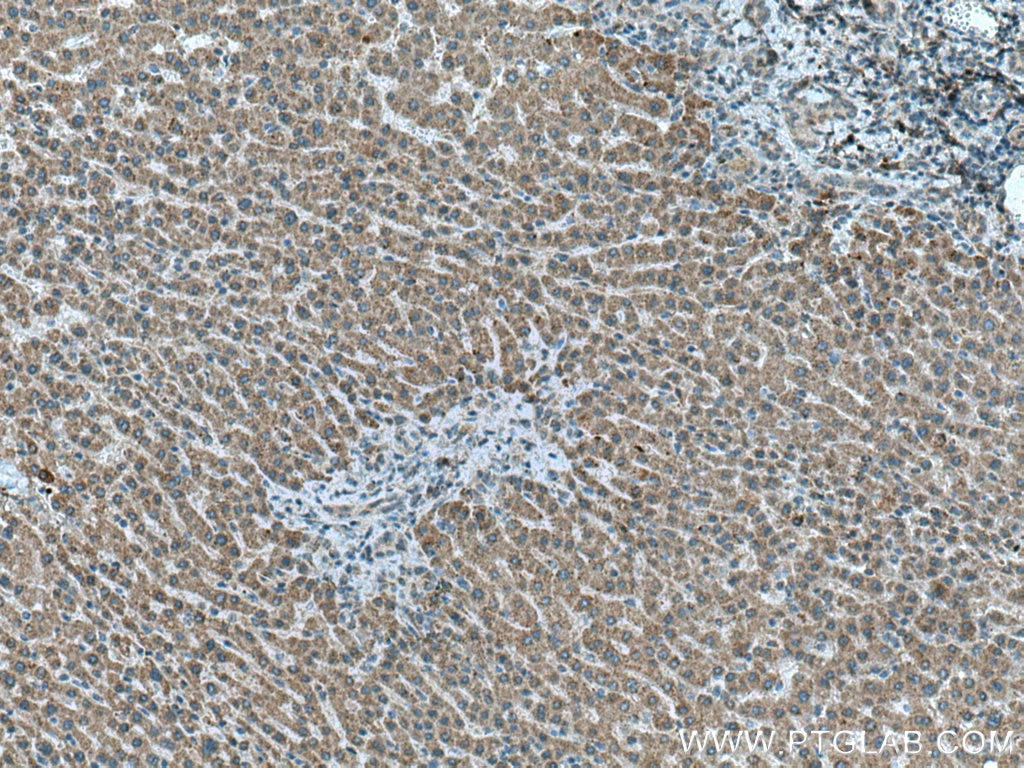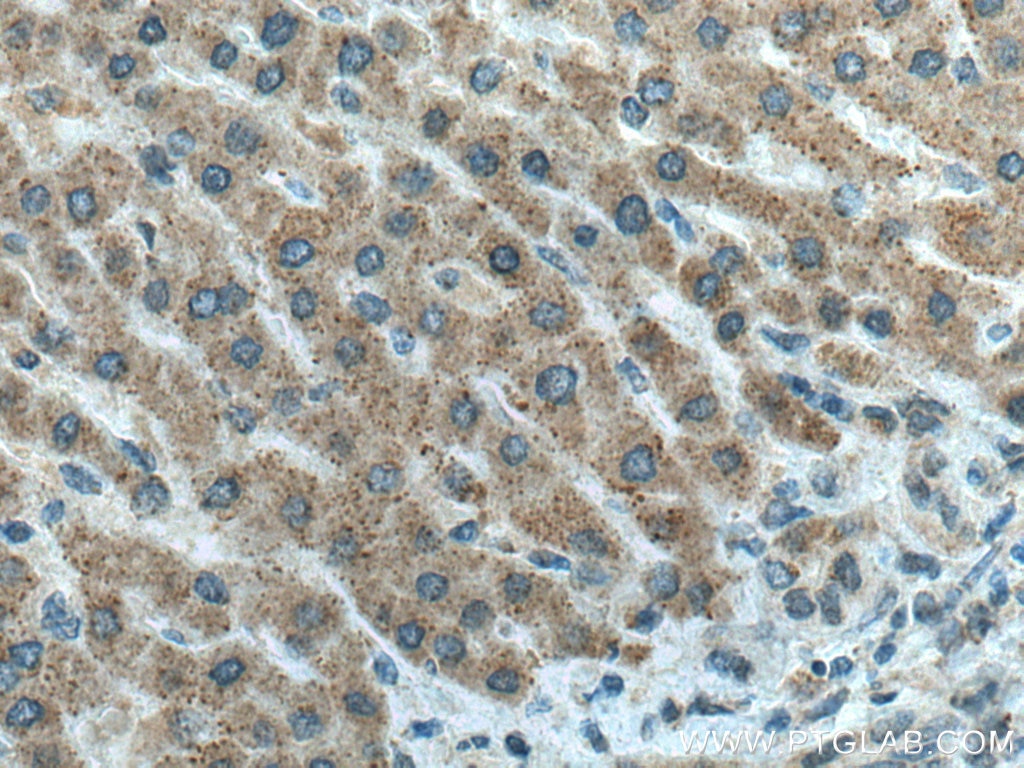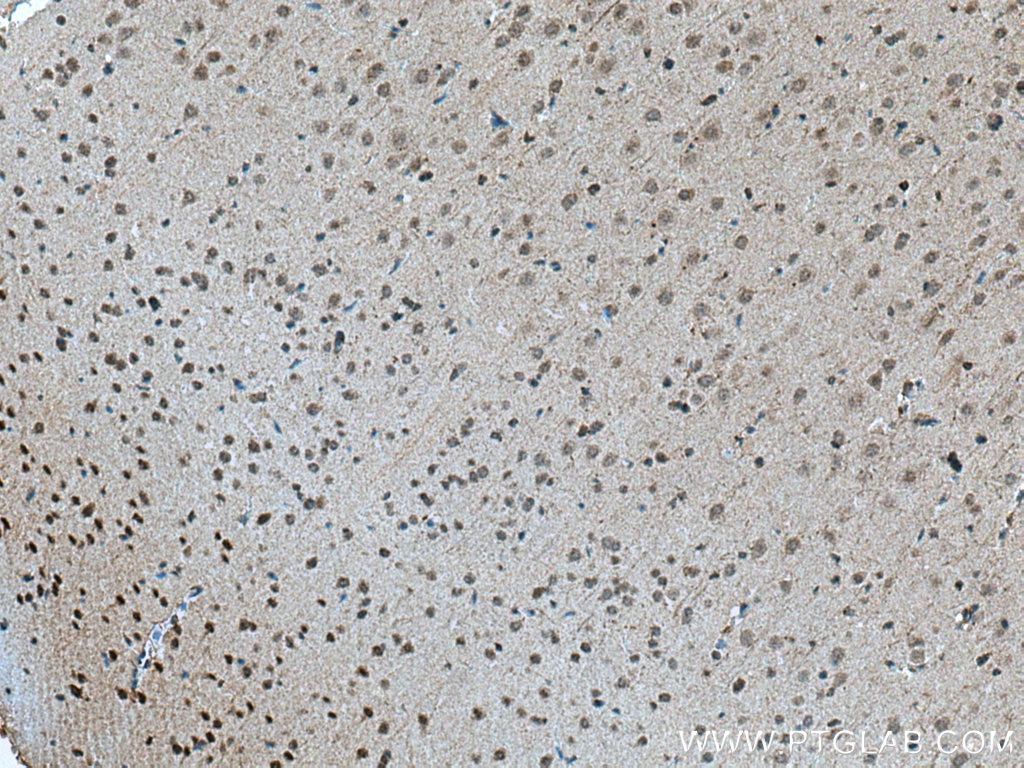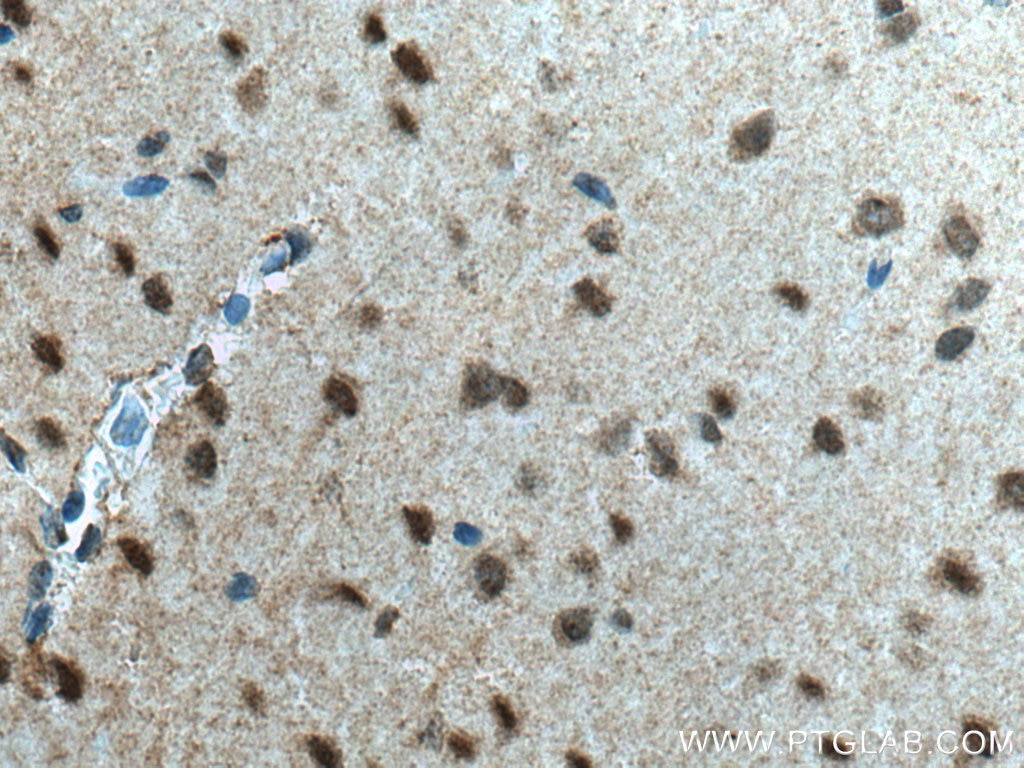Validation Data Gallery
Tested Applications
| Positive WB detected in | 3T3-L1 cells |
| Positive IHC detected in | human liver cancer tissue, rat brain tissue Note: suggested antigen retrieval with TE buffer pH 9.0; (*) Alternatively, antigen retrieval may be performed with citrate buffer pH 6.0 |
Recommended dilution
| Application | Dilution |
|---|---|
| Western Blot (WB) | WB : 1:200-1:1000 |
| Immunohistochemistry (IHC) | IHC : 1:50-1:500 |
| It is recommended that this reagent should be titrated in each testing system to obtain optimal results. | |
| Sample-dependent, Check data in validation data gallery. | |
Published Applications
| IHC | See 1 publications below |
Product Information
27293-1-AP targets Chordin in WB, IHC, ELISA applications and shows reactivity with human, mouse, rat samples.
| Tested Reactivity | human, mouse, rat |
| Cited Reactivity | human |
| Host / Isotype | Rabbit / IgG |
| Class | Polyclonal |
| Type | Antibody |
| Immunogen |
CatNo: Ag26001 Product name: Recombinant human CHRD protein Source: e coli.-derived, PGEX-4T Tag: GST Domain: 27-350 aa of BC112345 Sequence: AGPEPPVLPIRSEKEPLPVRGAAGCTFGGKVYALDETWHPDLGEPFGVMRCVLCACEAPQWGRRTRGPGRVSCKNIKPECPTPACGQPRQLPGHCCQTCPQERSSSERQPSGLSFEYPRDPEHRSYSDRGEPGAEERARGDGHTDFVALLTGPRSQAVARARVSLLRSSLRFSISYRRLDRPTRIRFSDSNGSVLFEHPAAPTQDGLVCGVWRAVPRLSLRLLRAEQLHVALVTLTHPSGEVWGPLIRHRALAAETFSAILTLEGPPQQGVGGITLLTLSDTEDSLHFLLLFRGLLEPRSGGLTQVPLRLQILHQGQLLRELQA 相同性解析による交差性が予測される生物種 |
| Full Name | chordin |
| Calculated molecular weight | 955 aa, 102 kDa |
| Observed molecular weight | 102 kDa |
| GenBank accession number | BC112345 |
| Gene Symbol | Chordin |
| Gene ID (NCBI) | 8646 |
| RRID | AB_2880832 |
| Conjugate | Unconjugated |
| Form | |
| Form | Liquid |
| Purification Method | Antigen affinity purification |
| UNIPROT ID | Q9H2X0 |
| Storage Buffer | PBS with 0.02% sodium azide and 50% glycerol{{ptg:BufferTemp}}7.3 |
| Storage Conditions | Store at -20°C. Stable for one year after shipment. Aliquoting is unnecessary for -20oC storage. |
Background Information
CHRD is a secreted protein that dorsalizes early vertebrate embryonic tissues by binding to ventralizing TGF-beta-like bone morphogenetic proteins and sequestering them in latent complexes. CHRD may also have roles in organogenesis and during adulthood. It has been suggested that CHRD could be a candidate gene for Cornelia de Lange syndrome. Reduced expression of CHRD results in enhanced bone regeneration.
Protocols
| Product Specific Protocols | |
|---|---|
| IHC protocol for Chordin antibody 27293-1-AP | Download protocol |
| WB protocol for Chordin antibody 27293-1-AP | Download protocol |
| Standard Protocols | |
|---|---|
| Click here to view our Standard Protocols |

